Polls suggest there is little room for Trump to sway voters 📊 September 6, 2020
On unrest, the coronavirus, and the economy, most voters see a brighter future with Joe Biden than Donald Trump
Tomorrow is Labor Day, which means the horses have rounded the final bend in the election of the century… or at least the last four years. And this is my newsletter.
As always, I invite you to drop me a line (or just respond to this email). Please hit the ❤️ below the title if you like what you’re reading; it’s our little trick to sway Substack’s curation algorithm. If you want more content, I publish subscriber-only posts 1-2x a week.
Dear reader,
Tomorrow is Labor Day, the traditional marker of the beginning of the end of the presidential campaign. It is a good time to reflect on all that has happened over the course of the campaign so far—the coronavirus and protests over racial injustice, but also Donald Trump’s impeachment and a panic over conflict with Iran!—as well as to consider just how much can happen in the months ahead.
The holiday also offers us the opportunity to consider all that hasn’t changed, namely: Donald Trump. He is a known quantity. His approval ratings are low, roughly where they’ve been since the spring of 2017. Voters expect only small deviations from his typical course of action in response to events both internal and external: question the experts, toe the partisan line and embrace conflict. “All news is good news,” our president is fond of saying.
And it’s because he is a known quantity that he will probably lose the election in November. Not certainly, but probably. Voters give him poor marks on all the major issues of the day. And as an incumbent, that’s an untenable position to find oneself in.
—Elliott
Polls suggest there is little room for Trump to sway voters
On unrest, the coronavirus, and the economy, most voters see a brighter future with Joe Biden than Donald Trump
Let’s check in briefly with the horse race. In most of the good averages and models, things have been relatively unchanged over the last week. The Economist’s model is showing only a tiny bit tightening, mostly from shifting ground in the swing states:
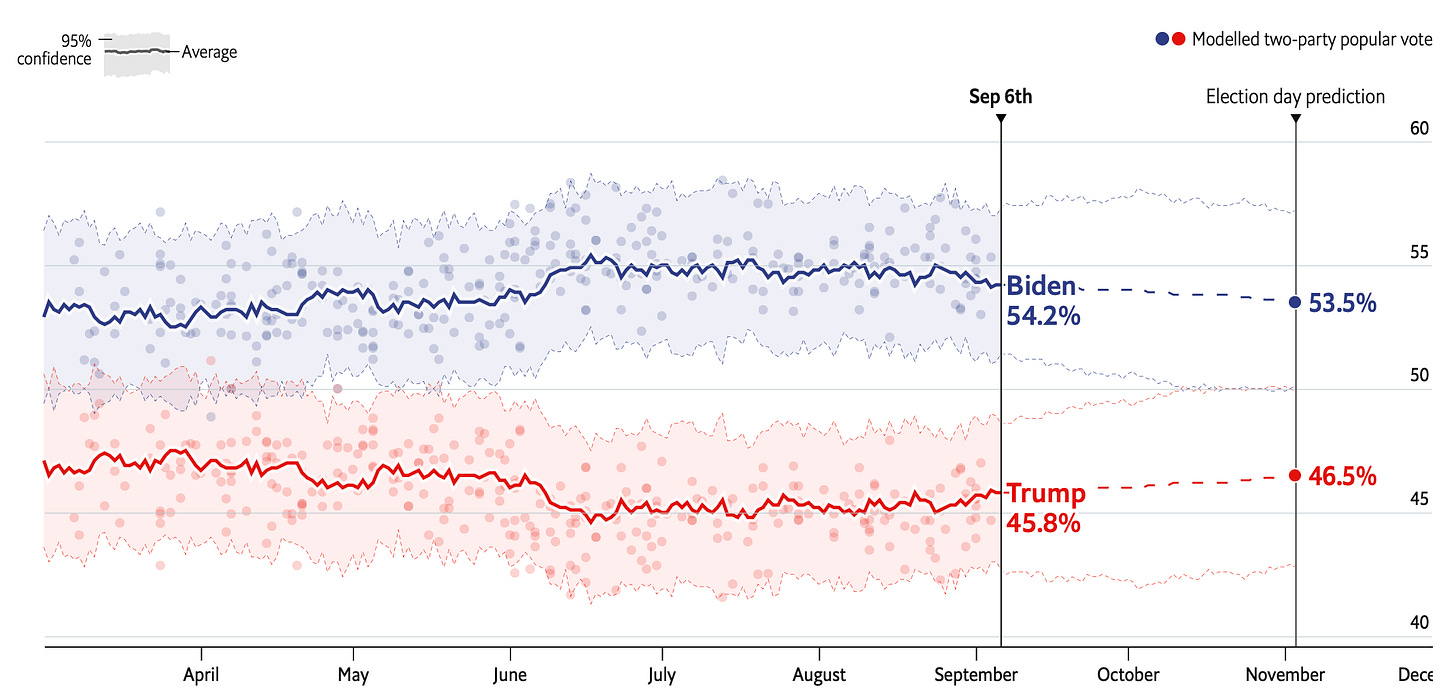
FiveThirtyEight has the race at Biden + 7.5, “down” (but not really) from Biden + 8.4 last Monday. Their forecast for the November vote is similarly stable.
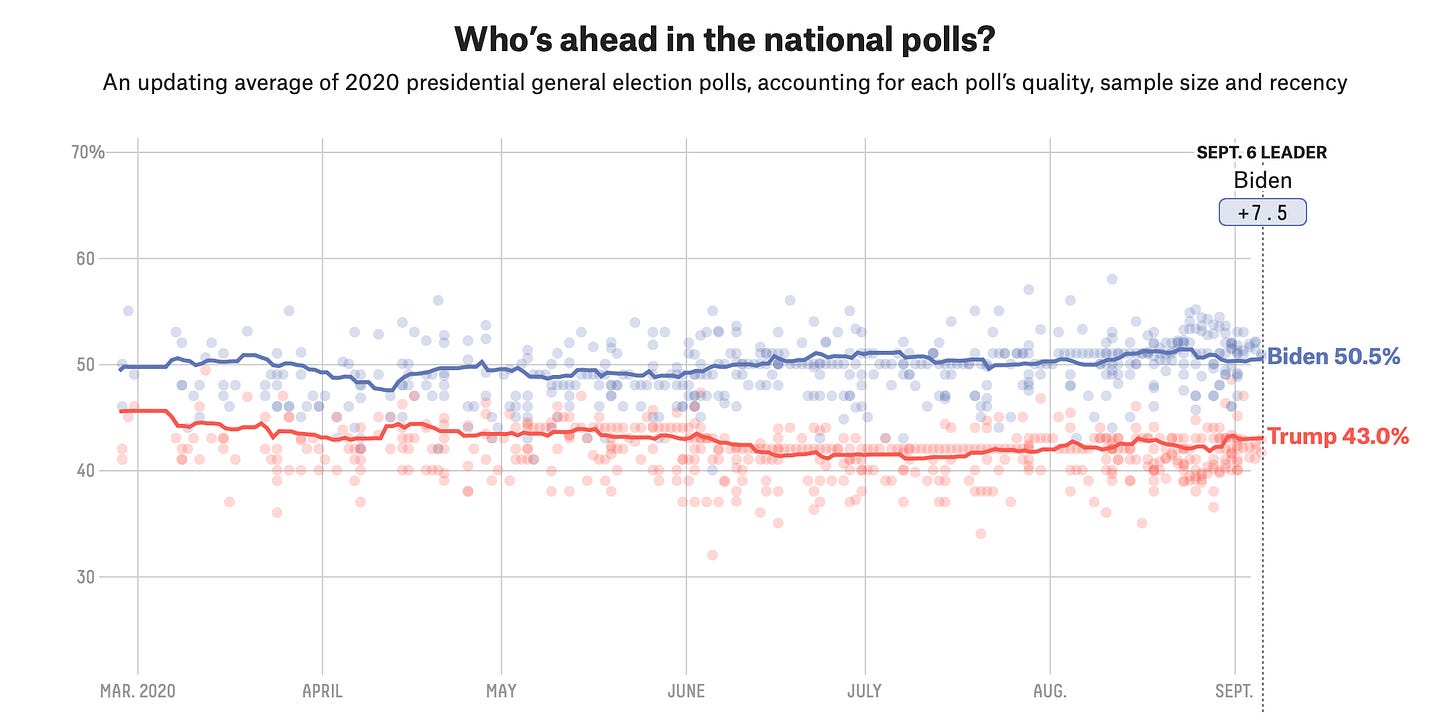
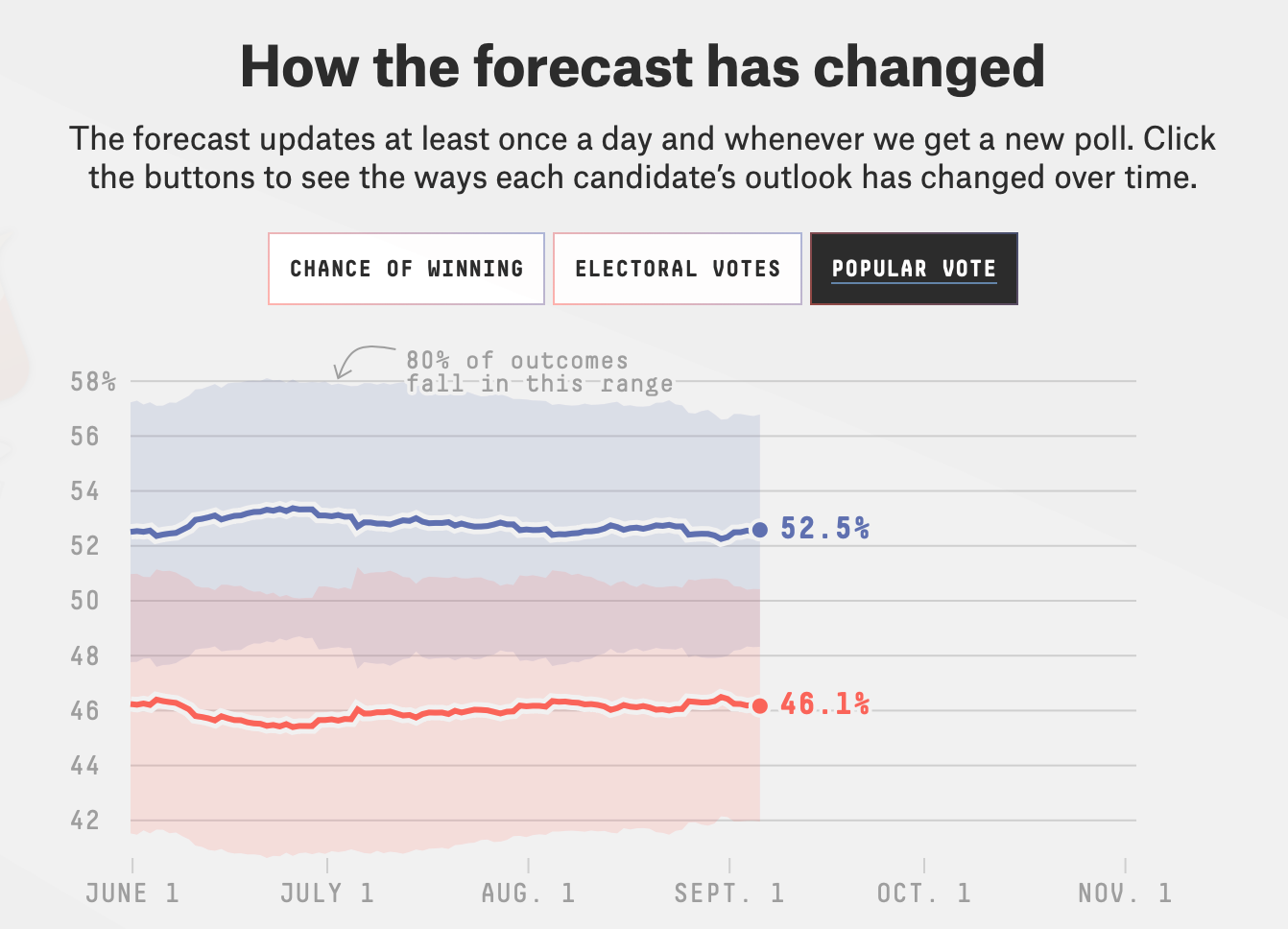
And finally, in a pretty simple toy election model that I coded up earlier this year, things are similarly stable both nationally and in the competitive jurisdictions:
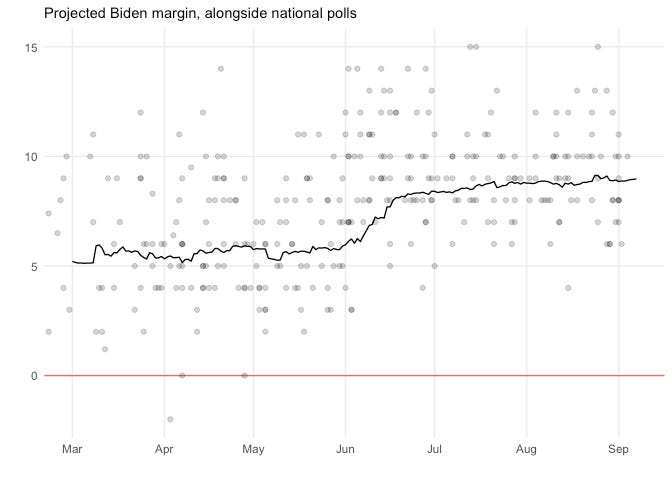
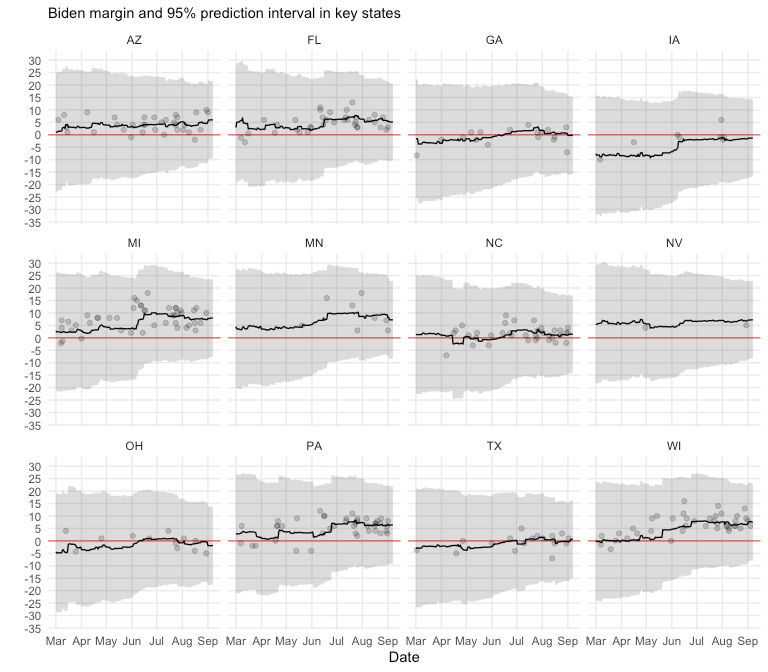
All of this stability speaks to a fundamental problem for Trump’s chances of re-election: When you’re the incumbent, it’s hard to change voters’ minds—especially in the polarized era. And that brings me to our main discussion.
On the issues that are most important to voters, Joe Biden leads Donald Trump. On unrest, the coronavirus, and economic growth, most voters see a brighter future with Joe Biden. Let’s take a tour of the data.
According to new data from CBS News and YouGov out this morning, registered voters nationally rate Joe Biden’s ability to address the recent protests in cities such as Kenosha, Buffalo and Seattle higher than Trump’s. By 49% to 30%, they think the former Vice President has been better at calming the situation than making it worse. Those figures are reversed for the incumbent: 47% think he has been trying to encourage fighting, versus 39% who think he is trying to calm people down.
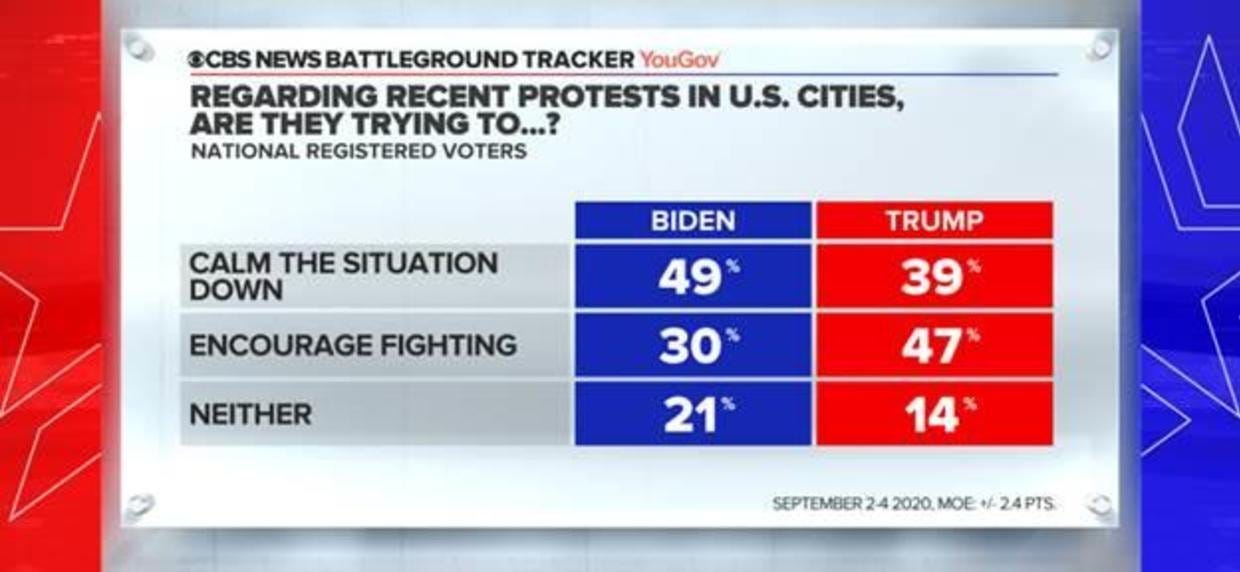
Of course, this raises the question of whether voters want their president to be calming rather than inflaming tensions. Generally, it seems like they want the former. According to YouGov, 56% of voters say that re-electing Trump will make protests and violence worse.
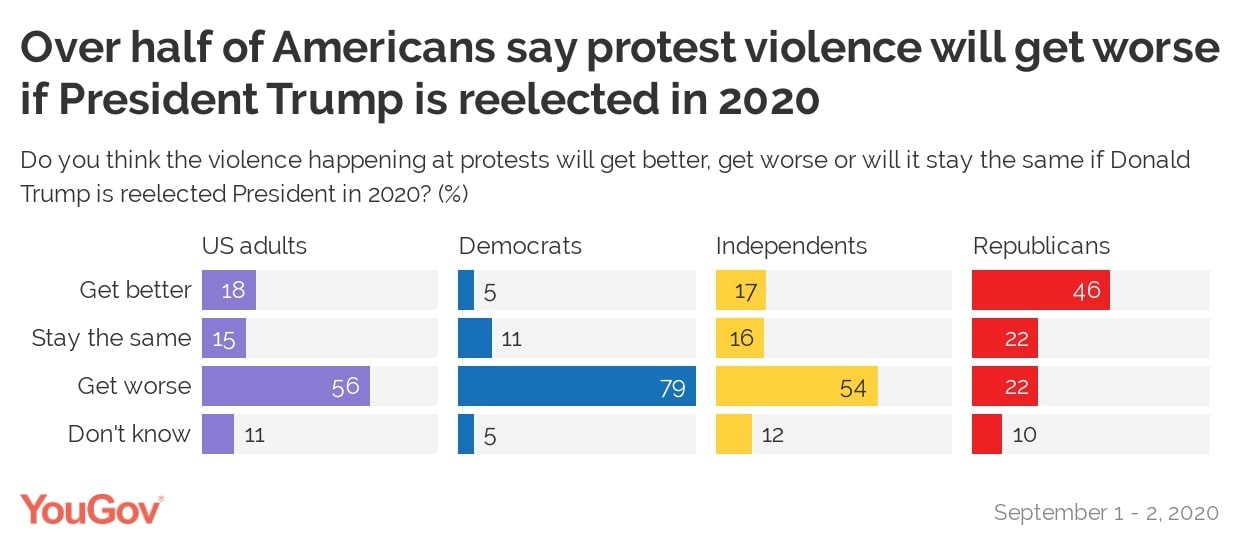
What about coronavirus? YouGov also has some data on that subject in the form of their weekly surveys with The Economist. The majority (56%) of adults say they feel uneasy at Donald Trump’s handling of the virus. According to 538’s tracking, the aggregate of polls is similarly bad for the president:

Of course, that is not all too surprising. The US is currently on track for 200,000 deaths by November, and lockdowns have only marginally improved since June. Perhaps if a vaccine is announced by the election, things can turn around—but the chance that the issue becomes a winning one for Trump any time soon is pretty small.
That brings us to the economy, which is trending upward but still in a deep, deep hole. And more Americans think that his re-election would make things worse than better.
But the economy does provide an upside for Trump, if only a slight one. According to multiple polls, the president’s approval ratings on jobs and growth are some of his best.
However, it might be misleading to think that voters who approve of the president on the economy are willing to vote for him. One study of polling from UCLA and the Democracy Fund revealed that the 11% of voters who disapprove of Donald Trump overall but approve of him on the economy—those that pundits might say he can win over if conditions improve or he handles the situation better (whatever that might mean)—favor Biden over Trump by 41 points, 60 percent to 19 percent. Thus writes John Sides of Vanderbilt University:
There is another lesson in these poll numbers. If the goal is predicting whether people will vote to reelect the president, it’s better to rely on overall approval ratings than to try to parse the nuances of how voters evaluate the president on different issues. In the Nationscape survey, people’s intention of voting for Biden or Trump was more strongly related to their overall approval of Trump than their opinions about Trump’s performance on 10 different issues, including the economy, health care, foreign affairs, immigration, taxes and the coronavirus.
…
The 2020 election so far has been remarkably stable. We should expect it, more or less, to say similarly static in the coming months. As the race enters the final stretch we can glean some additional insights from what voters say about the issues that actually matter to them. And on these issues, the polls say more to justify Joe Biden’s current lead in the race than to poke holes in it.
Posts for subscribers
September 2: The data suggest that "law and order" probably won't save Trump. (And I'm unsure about what actually could)
What I'm Reading and Working On
I’m reading Madeleine Albright’s Fascism: A Warning and Jason Stanley’s How Fascism Works this week to try to better understand how so many Americans got to the point of sanctioning both state and vigilante violence against their brothers and sisters, often for political purposes. I know, I know—very light holiday reading!
Thanks for reading!
Thanks for reading. I’ll be back in your inbox next Sunday. In the meantime, follow me online or reach out via email if you’d like to engage. I’d love to hear from you.
If you want more content, I publish subscriber-only posts on Substack 1-3 times each week. Sign up today for $5/month (or $50/year) by clicking on the following button. Even if you don't want the extra posts, the funds go toward supporting the time spent writing this free, weekly letter. Your support makes this all possible!
Photo contest
Tim sent in this photo of his pup Toby a few weeks back. He’s got that certain look in his eyes that dogs get when they’re chasing balls, or when I smell a good pizza joint on the next block.
For next week’s contest, send in a photo of your pet(s) to elliott@gelliottmorris.com!





Were the polls in 2016 similarly stable? Looking at 538 suggested they moved a *bit* more. Do you think this year is qualitatively different than the trends we saw (with the Dem ahead) in 2016?
if you come to rationalize Americans' appetite for fascism please do share.